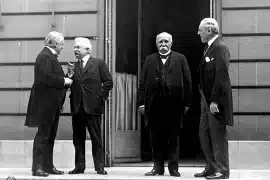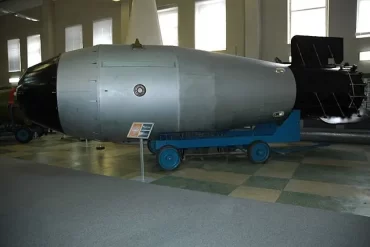Economic factors have long been viewed as probable explanations of state behavior. The fact that economic security is now considered an organic dimension of national security is no exaggeration. Plato, relevantly described money as a cause of war and even went so far as that republic should remain that much poor so it would not be worth attacking. In Marxist perspective, economics is viewed as the driving force that determines political behavior. Not only in Marxist literature but also in mass thoughts small states are renowned as proletariat of international political economy (IPE). With this nihilistic tag, however, these states are playing critical role in global political economy. They are underdogs but they are not out of equations. Small States mostly repressed class in global political economy vice versa economic diplomacy is most promising instrument for small states serving their national interests.
Defining the indefinite
Small State
Different studies of “small state” have distinct characterizations. Even there is substantial disagreement over what indictors should be used to define a small state. Defining terms such as ‘weakness’, ‘power’, and ‘size’– especially, definitions that apply over time and space – has been proven difficult in international relations. In politics nothing can be estimated or evaluated directly. All the political debates need to be justified through prisms. If all the factors of debate are complied and generalize into a definite frame which can describe all the small state through same unique prism then, possibly, definition will be figured like this:
A small state is a nation state that has a nominal territory with population of any size, a hardly effective or no military power, limited natural resources, and emerging or struggling economy.
Economic diplomacy is the best available and encouraging instrument for small states to encoding external economic relations. Economic diplomacy is an expression of the governance that a country dispenses to itself in its external economic and commercial relationships. Due to tiny facts in all aspect of small states powers capabilities, economic relations emerged as only ground where they can be responsive to international political interactive relations.
Economic Diplomacy
The concept of economic diplomacy can be understood entirely within this framework; it is represented by the opportunity to put good political relations abroad to their best use, promoting the economic growth of state, so that companies of state can create jobs and export homegrown technology and promote our cultural industry abroad. In recent years economic diplomacy has gained in prominence, leading some to assert that this form is ‘more important’ than the bilateral. In reality the relationship between pairs of states is the building block in the composite process, where multilateral arrangements are more vital today than ever before. Economic diplomacy is the process through which countries tackle the outside economic world, to maximize their national gain in the economic fields, including trade, investment and other forms of economically beneficial exchanges, where they enjoy comparative advantage; it has bilateral, regional and multilateral dimensions, each of which is important.
As economic diplomacy is being recognized as a crucial element for the development of small and vulnerable countries, small states are taking concrete steps to acquire the capacity and the natural resources to increase their participation and voice their concerns at various international forums. They are attempting to find innovative and cost-effective means to address these challenges. Considerable headway has been made already by some countries in adopting practices used by advanced economies. These practices are emerging as the tools for small states to proactively engage in an international environment, driven increasingly by economics. The term ‘economic diplomacy’ as described by Bayne and Woolcock, 2007 is “broad and elastic” enough to accommodate a scope and content that is much broader than diplomacy in its traditional sense.
Bayne and Woolcock define the scope of economic diplomacy to include the following:
Scope: International and Domestic economic issues – this includes the “rules for economic relations between states” that has been pursued since the World War II. And owing to the increased globalization and the resultant interdependence among state during the 1990s obliges “economic diplomacy to go deep into domestic decision making” as well. This covers “policies relating to production, movement or exchange of goods, services, instruments (including official development assistance), money information and their regulation” (Bayne and Woolcock (eds) 2007, p. 4)
Players: State and non-state actors – As all government agencies that have economic mandates operate internationally and are players in economic diplomacy though they do not describe them as such. Further, non-state actors such as NGOs that are engaged in economic activities internationally are also players in economic diplomacy (Bayne and Woolcock (eds) 2007, p. 3-4)
Berridge and James (2003, p.91) state that “economic diplomacy is concerned with economic policy questions, including the work of delegations to conferences sponsored by bodies such as the WTO” and include “diplomacy which employs economic resources, either as rewards or sanctions, in pursuit of a particular foreign policy objective” also as a part of the definition. Rana (2007, p.201) defines economic diplomacy as “the process through which countries tackle the outside world, to maximize their national gain in all the fields of activity including trade, investment and other forms of economically beneficial exchanges, where they enjoy comparative advantage.; it has bilateral, regional and multilateral dimensions, each of which is important.”
Economic diplomacy is a diplomatic segment in which there is hope of opportunity to make balance or equal interactive inter-state relations. In case of economic diplomacy state and non state actors both are very much sound in operational behavior. Interestingly small states most of the challenges coming from non state actors such as multinational corporations (MNCs), international non- government organizations (INGOs) along with international government organizations (IGOs). Economic diplomacy enabled diplomatic correspondents of foreign affairs of statecraft to restore and endorsing its national interests. Economic Diplomacy is empowering and maneuvering economic determinants of nation’s foreign policy to uphold and execute national monetary & economic interests.
Commonly economic diplomacy can be described as, “A form of diplomacy based on economic instruments serving monetary and economic interests & goals of individual, state & non-state parties of nation state.”
Economic means of foreign policy shaping
There is very little literature on processes and procedures used by small states in their decision making process both on the domestic and external front. As such, as observed by Diggines (1985, pp.197-198), it is believed that as in other similar decision making processes, foreign policy making is both centralized and personalized – based on the personal belief and knowledge of the head of government or state. Mohamed 2003 identified the following issues as the major concerns of microstates in their foreign policy:
1. Vulnerability of small states has been noted as the most important foreign policy issue for micro-states.
2. Environmental change i.e. global warming and the resultant climate change and its impacts on micro-states.
3. Issues concerning official development assistance (ODA).
4. Economic issues such as FDI and export promotion.
Economic theory suggests that small states may have intrinsic disadvantages (Easterly and Kraay 2000, Alesina and Spolaore 2003, World Bank 2008). In the economic dimension, the concentration is on the ability of small-state economies to survive in a world where economies of scale still dominate. The foreign policies of these states, in addition to being characterized by an element of centralized and personalized nature of the leader as pointed out by Diggines (1985), are driven by:
(a) Openness and small size;
(b) Remoteness and insularity;
(c) Proneness to natural disasters;
(d) Environmental vulnerability, particularly to external shocks; and
(e) Other domestic and external factors that the country deems to be important national interests.
The global political economy is becoming increasingly interdependent. No state, no economy-large or small can survive in isolation in the escalating process of globalization. External economic relations: foreign trade, investment, scientific & technological cooperation etc. are increasingly becoming more powerful instruments of socio-political advancement. The role of foreign policy achieving socio-economic goals could hardly be overstated. Foreign policy is being used as a device of moulding & influencing the policies of other states with a view of maximizing economic benefits. This dimension of diplomacy regarded as economic diplomacy attaining more importance states economic interactions at global level.
Countering the challenges of IPE
A host state of domestic predicaments and constraints set its agenda for pursing economic diplomacy. These are: inadequate domestic resources for economic development, scarcity of capital in international capital markets, the need to diversify trade relations, to strengthen the position in the existing markets and to explore new markets for export, the necessity of exporting manpower, the need for appropriate technology to boost her industrialization & modernization efforts and the need to make the developmental process environmentally safe & sound.
Rana (2007, p.202-205) states the following as the ingredients of successful economic diplomacy:
1. Public-private partnership – a healthy and effective public-private partnership that comprise of government agencies representing key economic sectors, associations of industry and chambers of commerce, financial sector, academic institutions, thinks tanks etc.
2. Integration and harmonization of foreign affairs and external economic management
3. Priority on inward export promotion and inward FDI
4. Regulatory framework to create an enabling environment
5. Improving the role of foreign ministry and missions in economic diplomacy
6. Improving the effectiveness of the activities in the area of economic diplomacy
The small states can be affected or making impacts in global political economy through 3 main channels which are: Banking & domestic lending, export earnings, financial flows.
Banking & domestic lending
In most small states banks are the primary financial intermediary; in an efficient financial system these banks would therefore mobilize savings, usually in the form of deposits, and allocate them to productive businesses through loans. In most small states banks are the primary financial intermediary; in an efficient financial system these banks would therefore mobilize savings, usually in the form of deposits, and allocate them to productive businesses through loans. Substantial personal savings are never captured by the financial system. Many people do not have bank accounts and instead keep their money at home, ‘under the mattresses. In some small states the amount of savings that is kept under the mattress is equal to a sizeable percentage of GDP. Banks maintain a very high level of liquid assets, such as short-term government bonds, central bank debt and cash, while only allocating a modest amount of funds to private sector firms. Banks in small economies choose to channel only a modest portion of their funds to private sector borrowers, while keeping a sizeable percentage of their deposits in liquid assets, such as cash, deposits with other banks, central bank debt, and short-term government securities; Caprio and Honohan (1991) refer to this as ‘excess liquidity’.
Bank regulators in small economies impose higher reserve requirements than regulators in small economies, largely because of increased macroeconomic risk and volatility. Higher reserves requirements help stem the risk from a run on the banks. However, reserve requirements are generally thought to be set too high in small economies, given the amount of risk confronting the banking system a policy known in the literature as a form of ‘financial repression’.
Globalization of banking raises questions about banks liquidity management, their responses to liquidity shocks, and the potential for international shock propagation. Global banks manage liquidity on a global scale, actively using cross border internal funding in response to local shocks. Having global operations insulates banks from changes in monetary policy while banks without global operations are more affected by monetary policy that previously found. As financial market has becoming globalized, banks have expanded their operations, developing growing networks of physical branches and subsidiaries in foreign countries. Small states on of major representative forum the LDCs’ total debt stock reached $161 billion in 2010, only marginally higher than in 2009. Although the data for 2011 are not final, it is estimated to have increased to around $170 billion. LDCs’ debt service decreased slightly from $8.2 billion in 2009 to 7.6 billion in 2010. External debt in relation to GDP fell from 29.9 per cent in 2009 to 26.7 in 2010. Compared with the situation at the beginning of the decade, when the ratio was 79.2, this is a substantial improvement. However, it is still more than eight percentage points of GDP higher than the average of developing countries. While part of this improvement was due to various debt relief initiatives, the decrease in the debt/GDP ratio was mostly due to rapid GDP growth during the boom. Similarly, debt service as a share of exports declined from 13.2 per cent in 2000 to 4.8 per cent in 2010, primarily as a result of very strong export growth.
Export
In a world driven by the complex world of international trading system, against a backdrop of eroding preferential market accesses, small states are finding it complicated to maintain the competitiveness of their limited export products and balance deficit due to large volume of imports. Trade is a vital part of development strategies of small states. Improving the composition, volume & value of exports and strengthening the policy and institutional framework that governs export development is at core of sustainable growth. Their options for export diversification are fewer and their costs of production are higher. Small states are more dependent on international trade: their small domestic markets require them to export more. This too much dependence on international trade is reflected in the high trade openness of many small states proved to be double edged sword. On the one hand, it has increased their integration into the global economy but on the other, it has made them more vulnerable to external shocks. Small states export is very narrow based & destined to a handful states. This makes export the most exposed transmission channel through which the global economic crisis can affect respective economy. A significant association implies that reduced income (GDP growth) in importing states will dampen exports while the low magnitude of association implies that the impact will be low. The lower association however, does not rule out the possibility of moderate to severe effect on the respective state’s export, particularly the economy of the importers are hit hard as was the case with global recession in 1930s and 2007s.
The value of merchandise exports from LDCs increased by 23 per cent in 2011, thus surpassing the pre-crisis level (annex table 4). The total value of merchandise exports in 2011 ($204.8 billion) was twice as high as five years previously. The change in 2011 was greatest for island LDCs, for which exports expanded by 50.8 per cent. On the downside, however, the merchandise exports of LDCs as a group have remained highly concentrated in a few countries: the top five exporters (Angola, Bangladesh, Equatorial Guinea, Yemen and Sudan) account for 62 per cent of all exports from LDCs. Exports of services by LDCs increased by 14.4 per cent in 2011 and also surpassed the pre-crisis level. However, at $25.3 billion they are still small compared with merchandise exports and account for just one-ninth of total exports. Imports of services expanded 15.6 per cent in 2011. The services trade deficit rose from $36.5 billion in 2010 to $42.5 billion in 2011. The gradual shift in the main markets for exports of LDCs continued in 2011, reflecting the long-term recalibration of the global economy as well as the weak economic performance of key destination markets in the North (UNCTAD, 2011a). As a group, LDCs exported more than 54 per cent of their total exports to other developing countries. China imported 26.4 per cent of total exports from LDCs, surpassing the European Union (20.4 per cent) and the US (19 per cent). Similar trends could be detected for LDC imports, with 67.8 per cent coming from other developing countries and only 29.8 per cent from developed ones. China has been growing in importance as a trade partner, and it is currently the second largest source of imports into LDCs (16.1 per cent of the total), behind the European Union (18.5 per cent).
Financial flows
Small states very much relied on financial inflows to accelerate economic growth and facilitate development. These inflows include official development assistance (ODA) or foreign aid, foreign direct investment (FDI) and flows of remittances. Data from the Development Assistance Committee (DAC) of the Organization for Economic Co-operation and Development (OECD) show that net Official Development Assistance (ODA) disbursements, together with net debt relief to the LDCs from all donors reporting to the OECD/DAC, reached a record level of $44.8 billion in 2010. This represents an 11 per cent increase in comparison with ODA disbursements in 2009. In nominal terms, aid inflows to LDCs in 2010 were 3.5 times higher than in 2000. As noted in LDCR 2011, ODA has played an important countercyclical role in the wake of the global crisis, cushioning the impact of the retreat of private financial flows.
FDI also plays an important role in the development of small states. Read (2007) notes FDI as an “important additional source of investment capital and a potentially critical contributor to growth and development” and lists four types of FDI – (i) resource-seeking FDI (ii) efficiency-seeking FDI (iii) market-seeking FDI (iii) strategic asset-seeking FDI, based on original research of Behrman (1972). Out of these, small and vulnerable island states are most likely to attract market-seeking FDI. It is evident that small states, with the exception of only a few, would not be competitive if evaluated on this matrix. This makes the intensive application of “ingredients of successful economic diplomacy” (Rana 2007, p.202) all the more imperative for the small states. FDI inflows to LDCs have declined for three consecutive years after peaking in 2008 at a little less than $19 billion, and in 2011 amounted to only $15 billion. Whereas FDI inflows to LDCs are still predominantly to Africa, some shifts have occurred recently. Of the total FDI flows to LDCs of $15 billion in 2011, 79 per cent went to Africa, a slight decrease from the previous year. Meanwhile, Asian LDCs received $2.8 billion in 2011, up marginally from the previous year. The concentration of FDI inflows appears to have diminished. In 2009, there were only five countries with inflows greater than $1 billion, whereas in 2011 there were nine such countries. In 2009, FDI outflows from all LDCs amounted to $1.1 billion, nearly tripling to $3.1 billion in 2010 and continuing to increase to $3.3 billion in 2011.
Most small states have a financial deficit in their international trading of goods and services and this is financed by foreign aid and remittances from their citizens or former citizens who have found work abroad.
Most small economies rely on foreign aid as a contributor to their development and a source of foreign funds to help finance their imports. Nevertheless, the importance of overseas economic assistance as a contributor to the well-being of the residents of small states economies varies greatly.
Realist thinking still dictated that small states chose between a narrow set of choices, namely a bandwagon or a balancing approach. But mercantilists who can either be termed as economic realists view on economic security derived from the state’s point of view and “economic and individual interests were subordinated to the pursuit of state power. To the liberalists, economic security meant security of market and security of economic interests of individuals. The Marxist described economic security paradigm as vicious circle of stagnation-bubble-burst-deeper stagnation and only alternative to the existing paradigm is socialism. Liberalist and Marxist thoughts describe economic interests is the basic objective of a state. International security expert Barry Buzan said, “The World is changing every day and with this the understanding of security. After 1990, when “David defeated Goliath” and the capitalism prevailed as the world economic order, the framework of under-standing security has widen; not only military, but also economic, societal, environmental, political threats became part of the complex understanding of security (Buzan, 1991: 112 -145).”
Small states economies are emerging and struggling but yet not go in vein. Paradoxical global economic security is relying on oppression-improvisation- relocation-expansion-conserving innovation cycle. Small states and developing states economies are the energy pill of that cycle. This cycle can take all or can give all but it not diminishes existence of any single one economy.
The writer is Member, Editorial Team, Foreign Affairs Insights & Reviews (FAIR).






